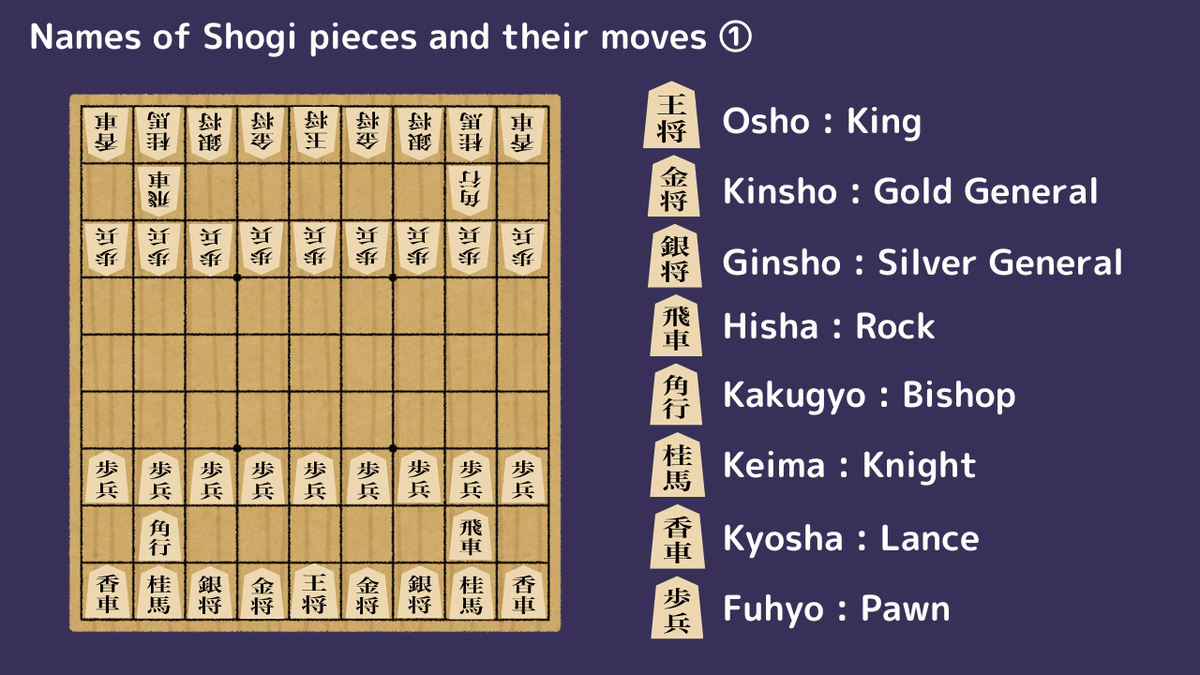
#3 History of 将棋(Shogi)! Part1
Do you enjoy playing games? What sort of games do you like to play now or even when you were growing up? Japan is famous for its gaming industry which gave the world many gaming icons such as SuperMario and Pokemon. However, did you know that Japan’s gaming culture can be traced back centuries ago? Even till now, there is an ancient Japanese board game that still remains popular in Japan today. “Shogi” is a two-player board game that traces its origins to the 11th century.
When I was growing up in Japan, I enjoyed playing Shogi in the local community centre as a hobby. When I came to Singapore, I wanted to find a Shogi interest group to continue my hobby here. To my surprise and delight, my Singaporean friends introduced me to another board game- “Go”. It is so fascinating that Go and Shogi are ancient board games from different Asian cultures, yet share so many similar concepts. They are the original viral games that have stimulated the minds of several generations.
What is 将棋(Shogi)?
Shogi, often referred to as Japanese chess, is a two-player strategy game. Each player begins with a set of 20 different chess pieces, such as King, Rook, Bishop, and Pawns. Each chess piece has unique movement abilities. The board consists of 9x9 squares. The objective is to capture the opponent's King. What is unique about Shogi is that captured pieces can be re-entered into play under the captor's control. This feature adds a layer of strategy as players can utilise captured pieces to strengthen their position or launch attacks. The game ends when one player succeeds in checkmating the opponent’s king .
The roots of 将棋
Strategic board games such as Shogi, Go, and even English Chess trace their origins to an Indian board game called "Chaturanga". The game was created by the ancient Indian army to imitate horses, elephants, chariots and infantry, and could have up to four players. Chaturanga was introduced to Europe and Asia by Arab merchants and transformed into its famous modern variations in the form of English chess, the Chinese 象棋xiangqi, Go and Japanese Shogi.
Over the centuries, other countries have adopted the concepts of the game and come up with their variations too. Other cousins of the game include: Thailand’s Makruk, Myanmar’s Sittuyin, Korea’s Janggi and Mongolia’s Shatar. The power of globalisation! It is amazing how even centuries ago, our ancestors already could come up with so many different versions of the game.
Most unique features of 将棋
Japanese Shogi is unique because it is the only variation of the game that allows a player to re-deploy captured opponent pieces to their advantage. This makes the game even more challenging because one has to also consider how to utilise the captured pieces one has captured and defend against the pieces your opponent has captured from you.
Secondly, Shogi’s game pieces are all identical in shape and colour- unlike English chess, Go or Xiangqi pieces that use different colours to show which piece belongs to respective players. In a Shogi set, all the game pieces are pentagonal in shape, with the names of the game pieces written in black on their top surfaces. Different pieces can move on the board in different ways, very much like English Chess. Both players start off with the same set of pieces. The sharp edge of the pentagonal game pieces face the opponent, like an arrow. As the players capture each other’s pieces, they will flip the captured pieces, such that the sharp edge now points towards its original owner.
How to move 将棋 pieces
The Shogi starts with a total of 20 pieces in each position: 王将(king)✖️1,
金将(gold general)✖️2, 銀将(silver general)✖️2, 飛車(Rock)✖️1, 角行(Bishop)✖️1, 桂馬(Knight)✖️2, 香車(Lance)✖️2 and 歩兵(Pawn)✖️9 in a predetermined position.

The way each piece moves has been made into a table, you can see!
Some pieces can evolve if they are in the top three panels on the opponent's side. You can choose to evolve or not. In many cases it is more useful to evolve, but depending on your strategy, you may dare to choose not to evolve. This choice also gives you a range of strategies!

Summary
In this article, I explained an overview of Shogi.
I think that just knowing a little bit about the rules and knowledge of Shogi makes Japanese people feel very familiar with you. There are many Japanese people who do not know the rules of Shogi at all, but Shogi is in the news every day and the names of Shogi superstars are so famous that everyone knows them.
Shogi is a game that is played almost exclusively in Japan, but that is why I think that if you know a little about it, you will give the impression that you are interested in Japan!
Also, I can say with confidence that the game itself is interesting (although I only enjoy it as a hobby)! In Singapore, you can buy a Shogi board and pieces at Takashimaya and other stores, and you can also play online.
In the next articles, I would like to introduce how Shogi has become popular up to the present, as well as some of the sayings that have been born from Shogi.
Thank you for reading!
この記事が気に入ったらサポートをしてみませんか?
